When disaster strikes, it’s not just humans who need safe access to food and water—our pets do, too. Dogs, cats, and other animals rely completely on us to plan ahead so they stay nourished and hydrated during an emergency. Whether you’re preparing for a short power outage, a wildfire evacuation, or a long-term crisis, knowing how to store food and water for pets can give you peace of mind and keep your furry family members safe.
Being prepared doesn’t just mean survival—it means comfort and security for your pets. Emergencies are stressful enough, and pets can pick up on our anxiety. Having supplies ready reduces uncertainty and makes transitions smoother if you need to evacuate quickly.
Why Pet Food & Water Storage Matters
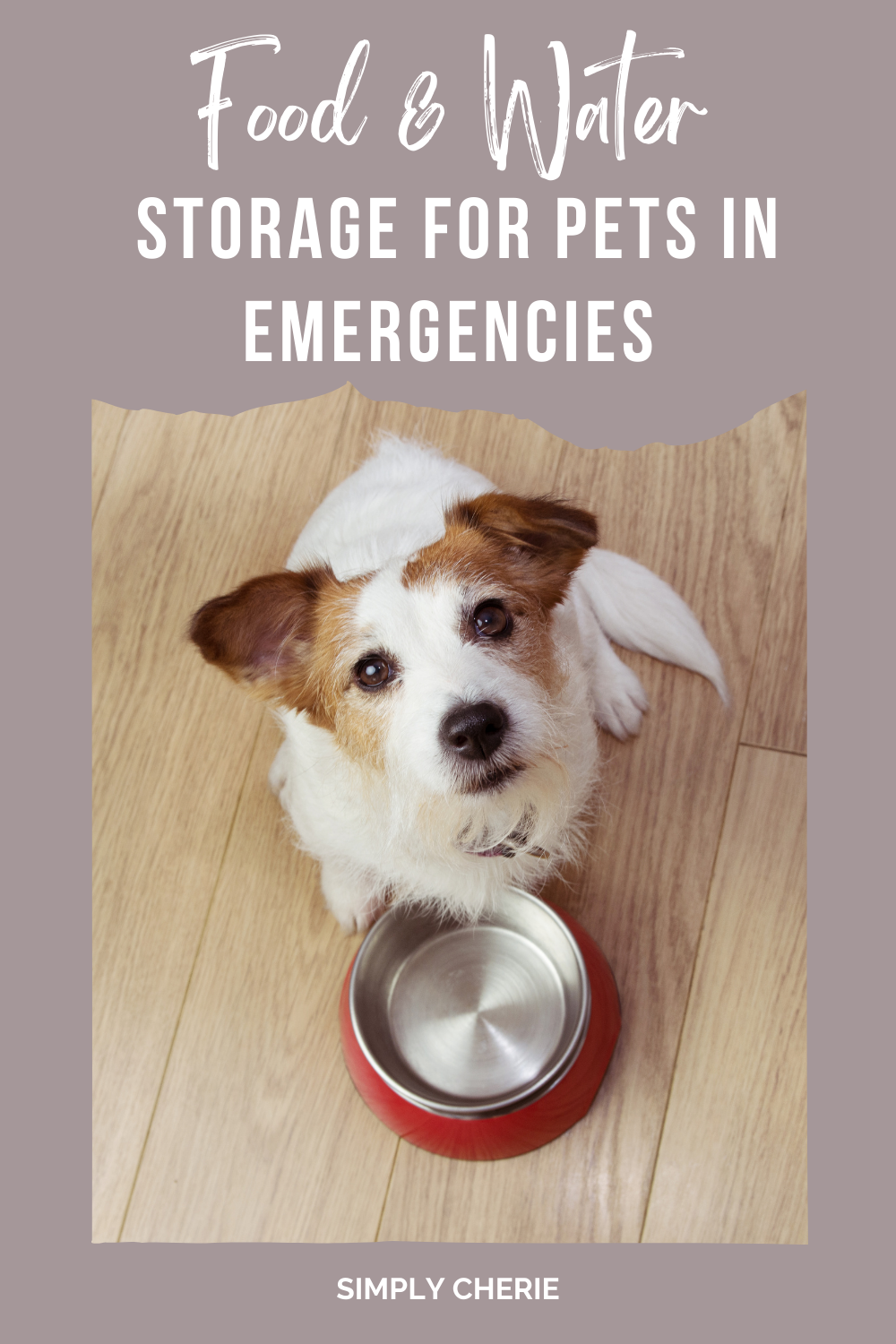
In emergencies, regular supply chains may be disrupted, stores could close, or shelves might empty fast. Having a dedicated supply of pet food and water ensures your pets don’t go hungry or suffer from dehydration. Safe storage prevents spoilage, contamination, and unnecessary waste. It also saves you the stress of scrambling for supplies when your focus should be on keeping your family safe.
Pets don’t adjust well to sudden food changes, and poor water quality can lead to illness. Even if you find substitutes, switching diets in stressful times can upset their stomach and cause unnecessary discomfort. By storing properly, you protect both their health and their sense of routine.
Think of it as part of your overall emergency plan. Just as you stock up for yourself, your pet’s needs should be prioritized with the same care and attention.
Storing Pet Food Safely
1. Choose the Right Containers
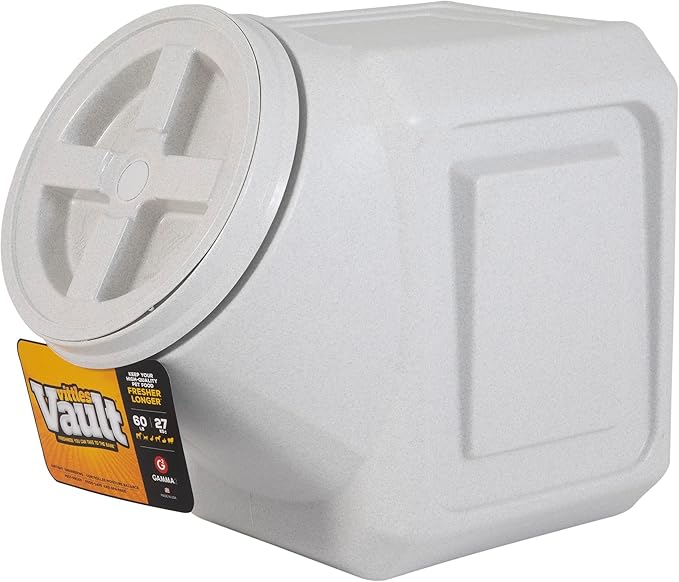
Pet food should be stored in airtight, food-grade containers to prevent exposure to moisture, pests, and bacteria. If you buy kibble in bulk, avoid leaving it in the bag long-term. Instead, place the bag inside a sealable bin or pour the food directly into one. For canned or wet food, keep cans in a cool, dry place.
- Avoid thin plastic bins that can crack or let in air.
- Choose containers with a secure lid and handles for easy transport in an evacuation.
- Always wash and dry containers before refilling to prevent mold growth.
Tip: Label containers with purchase or expiration dates so you can rotate older food first. This small step helps prevent waste and ensures freshness during emergencies.
2. Keep It Cool and Dry
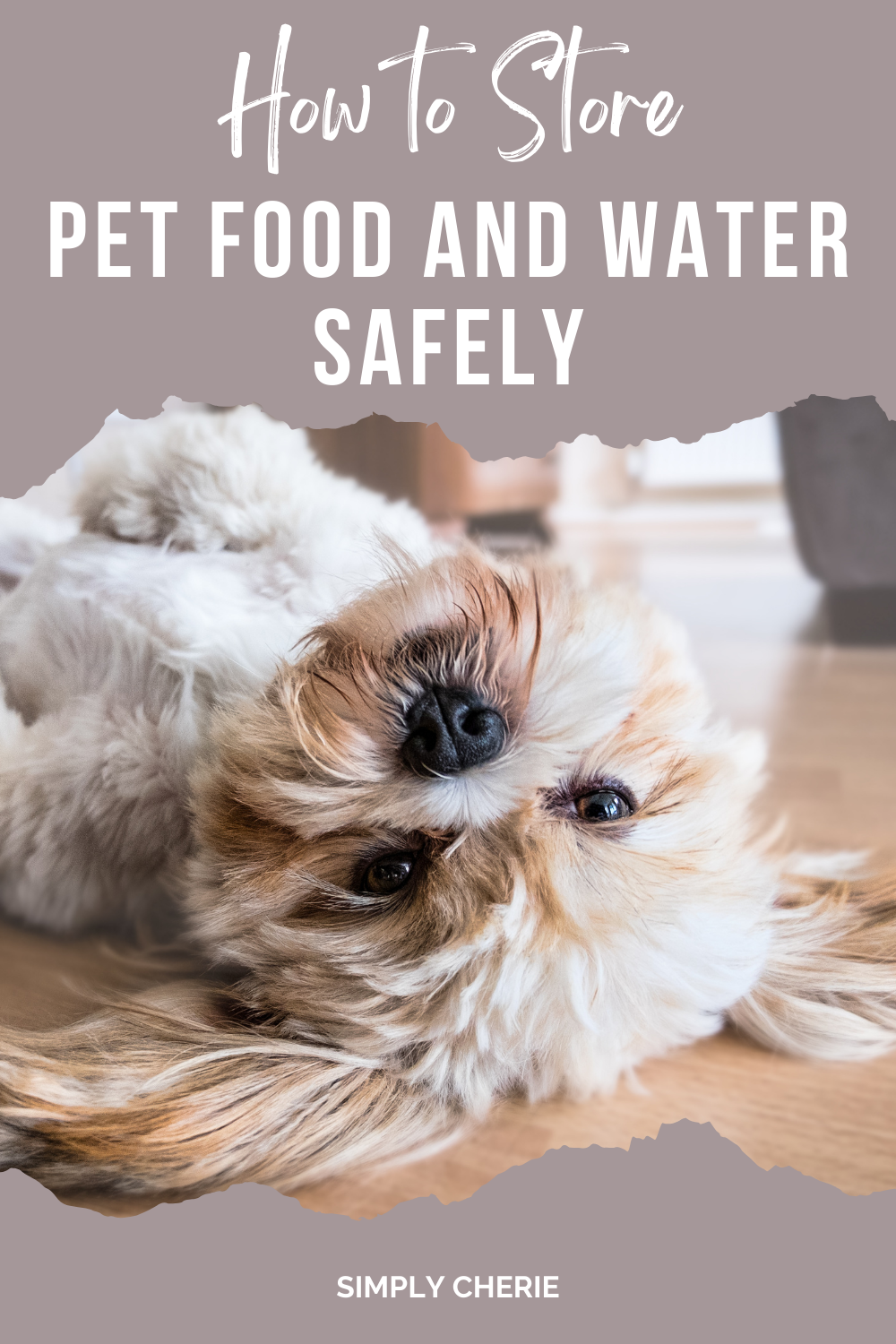
Heat and humidity can quickly spoil pet food. Store food in a temperature-controlled area like a pantry, closet, or basement (if it’s not damp). Avoid garages or sheds where temperatures fluctuate. Extreme conditions not only shorten shelf life but can also change the food’s nutritional quality.
Humidity also attracts pests such as insects and rodents, which can contaminate food supplies. Using desiccant packs in containers helps reduce moisture levels.
Rule of thumb: Don’t store food where you wouldn’t want to store your own. This ensures you keep it safe from heat, dampness, and other hazards that degrade its quality.
3. Stock an Emergency Supply
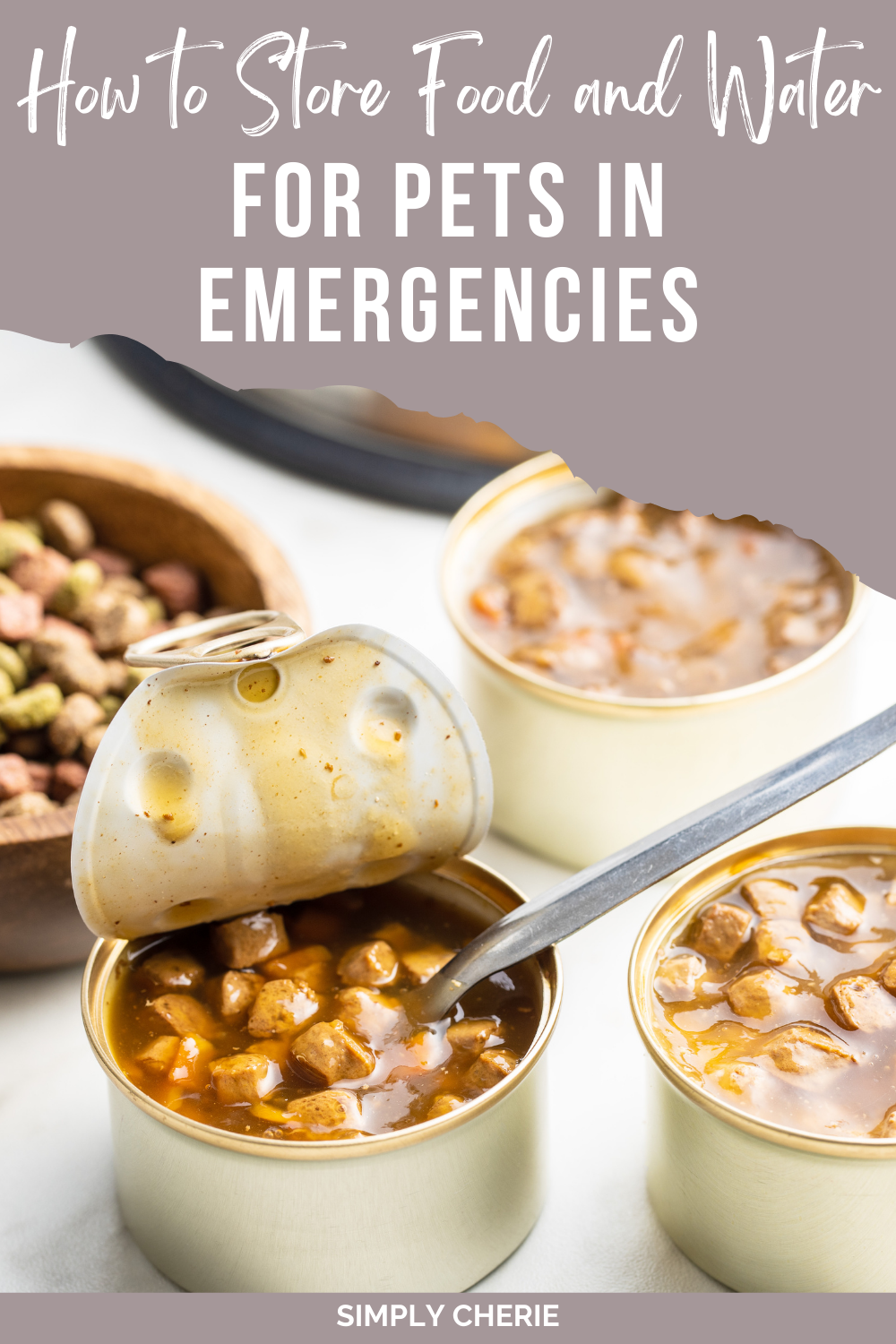
Have at least a two-week supply of pet food on hand, more if space allows. Rotate it regularly by using the oldest stock first and replacing it with fresh bags or cans. For longer-term storage, consider vacuum-sealed bags or freeze-dried pet food, which has a longer shelf life.
- Dry kibble: Typically good for 6–12 months if stored properly.
- Canned food: Can last up to 2–3 years, but check for dents or rust before use.
- Freeze-dried or dehydrated food: Lightweight, compact, and ideal for bug-out bags.
Stocking up not only prepares you for emergencies but also prevents last-minute stress when supplies run low. Keeping an organized rotation system helps you stay ahead of expiration dates.
Storing Water for Pets
1. How Much to Store

Just like humans, pets need water daily. A good guideline is ½ to 1 ounce of water per pound of body weight per day. For example, a 20-pound dog may need between 10 and 20 ounces (about 1¼–2½ cups) daily. Cats average around 3.5–4.5 ounces per 5 pounds of body weight.
In an emergency, it’s safest to calculate on the higher side. Stress, hot weather, or an all-dry food diet can increase their need for hydration. Having extra ensures you’ll never run short when it matters most.
Think about water not just for drinking but also for mixing with dry food or medications. Water is life-sustaining—running out is not an option.
Quick Daily Water Estimates
2. Best Containers for Pet Water
Use clean, food-grade plastic, glass, or stainless-steel containers. Rotate stored water every 6 months to ensure freshness. For convenience, consider sealed bottled water, which can stay safe for years if kept in a cool, dark place.
- Avoid reusing milk or juice containers, as sugars and proteins can breed bacteria even after washing.
- Clearly label containers as “Pet Water” so you don’t accidentally use or discard them.
- Store them off the ground in case of flooding.
Containers matter just as much as the water itself. Proper storage reduces the risk of contamination and keeps your supply dependable when you need it most.
3. Purification as Backup

If you run out of stored water, you may need to purify tap or natural water sources. Keep a portable water filter or purification tablets in your emergency kit—safe hydration is just as critical for pets as it is for you.
Never assume natural water sources are safe. Even streams or lakes that look clean can carry parasites or harmful bacteria. Pets are vulnerable to waterborne illness, which can quickly become life-threatening during a disaster.
A backup purification method ensures that, no matter the circumstances, you’ll always have safe water available. This step provides peace of mind when stored supplies run low.
Don’t Forget Special Needs
- Medications & Supplements: Store extra doses if your pet requires them. Keep them in their original containers with labels intact.
- Special Diets: If your pet eats prescription food, ask your vet about safe storage or alternatives. Specialty diets can be harder to find during emergencies, so stock ahead.
- Small Pets & Birds: Stock extra bedding, pellets, or seed mixes. Don’t forget items like hay for rabbits or vitamin drops for birds.
Every pet has unique needs, and ignoring them can create bigger challenges later. Tailor your emergency supply to your pet’s size, age, and health conditions. What works for one animal may not be enough for another.
Final Thoughts
In an emergency, the last thing you want to worry about is whether your pet has enough safe food and water. Taking a little time now to store supplies properly can make a huge difference later. You’ll not only keep your pets healthy but also reduce stress for the entire household.
Remember: preparedness is love in action. By planning ahead, you’re ensuring your pets stay safe, comfortable, and cared for no matter what comes your way.
Watch & Plan Your Own
Want to see a real example of a pet emergency kit?
👉🏼 Watch how I set up my own dog’s bug-out bag here.
And if you’d like a step-by-step printable guide, check out my Pet Emergency Kit Planner — it’s designed to help you organize everything your pet will need if disaster strikes.
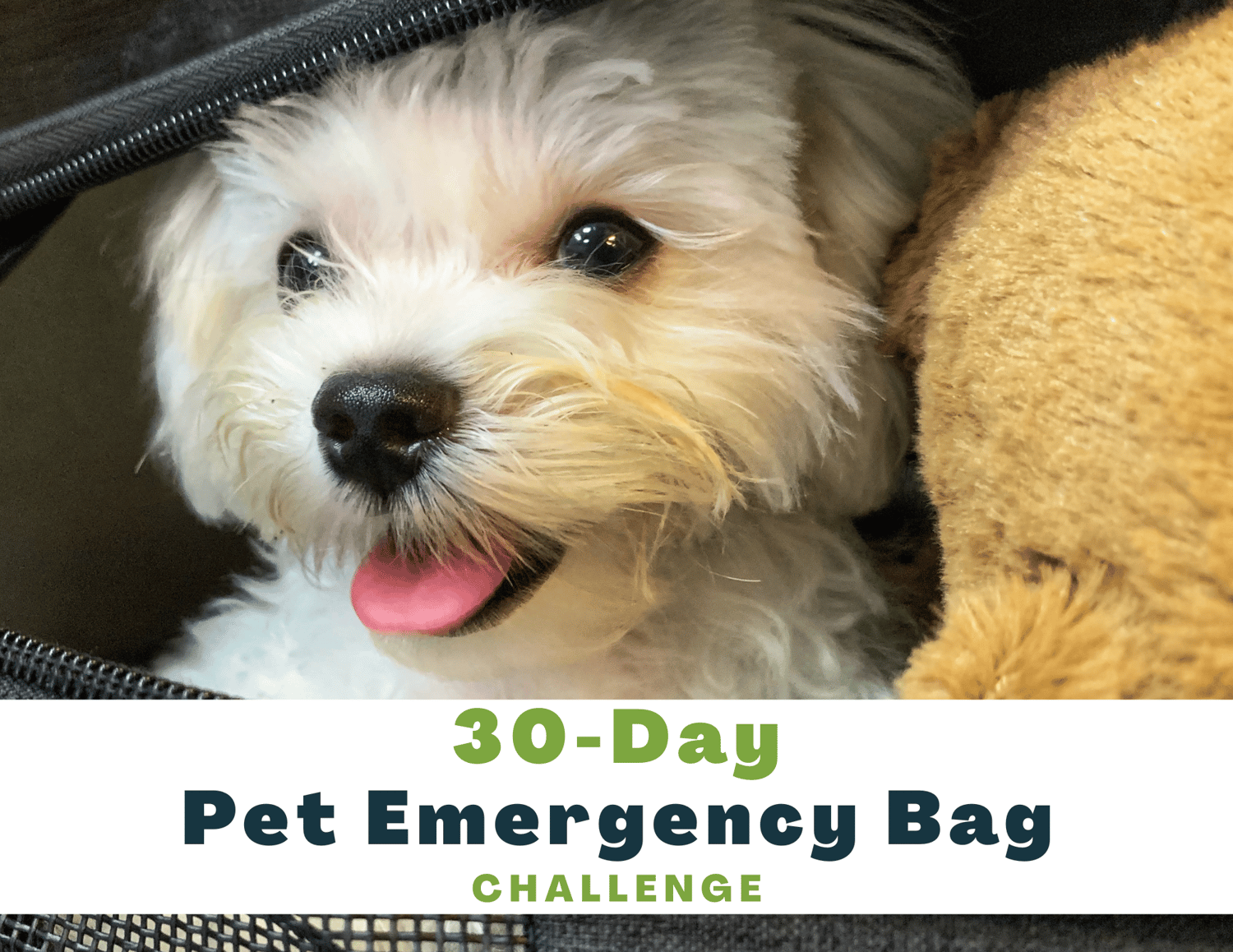
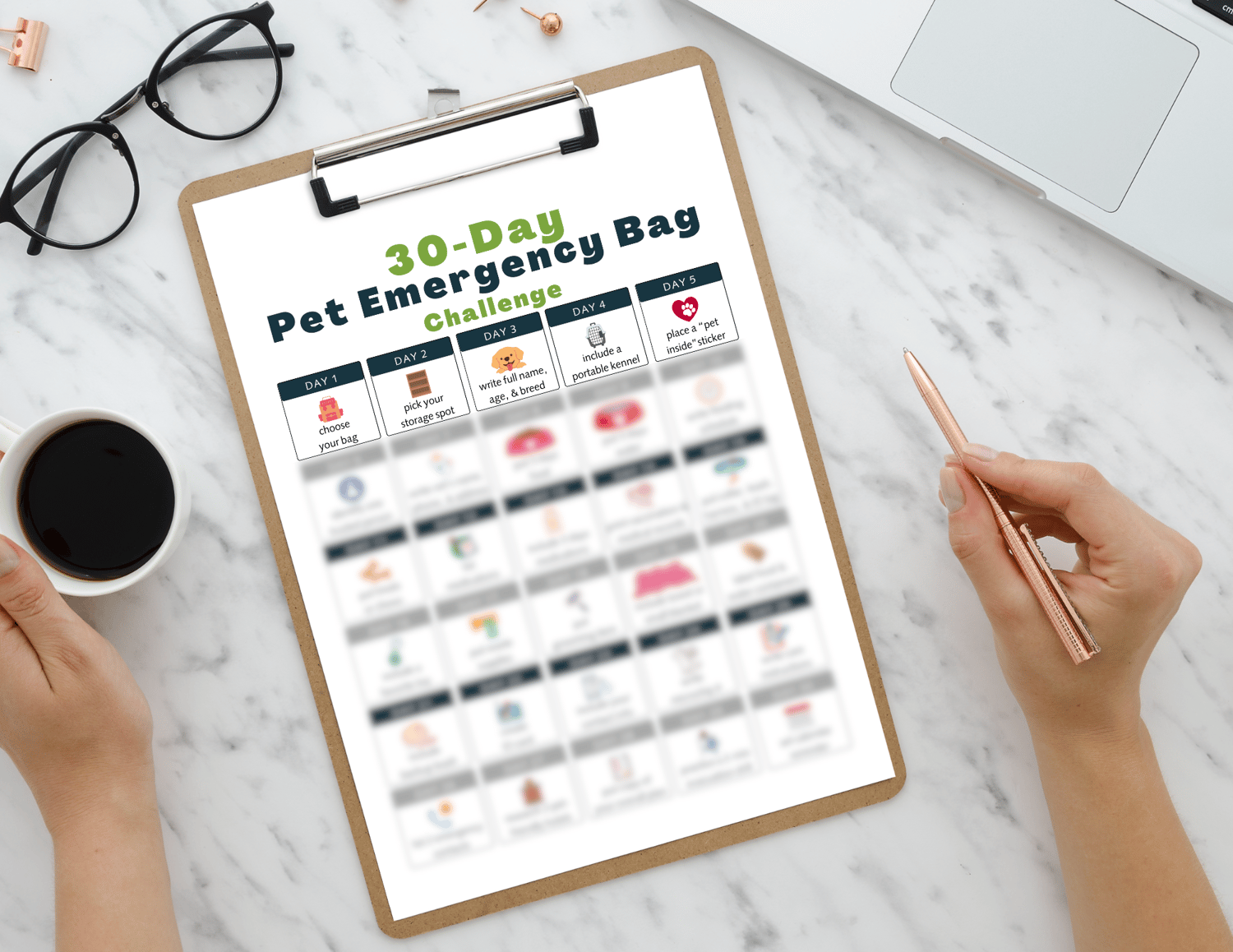
You may also enjoy:
This post may contain affiliate links, which means I may earn a commission if you purchase through them (at no extra cost to you!) Portions of this content may be generated by AI.


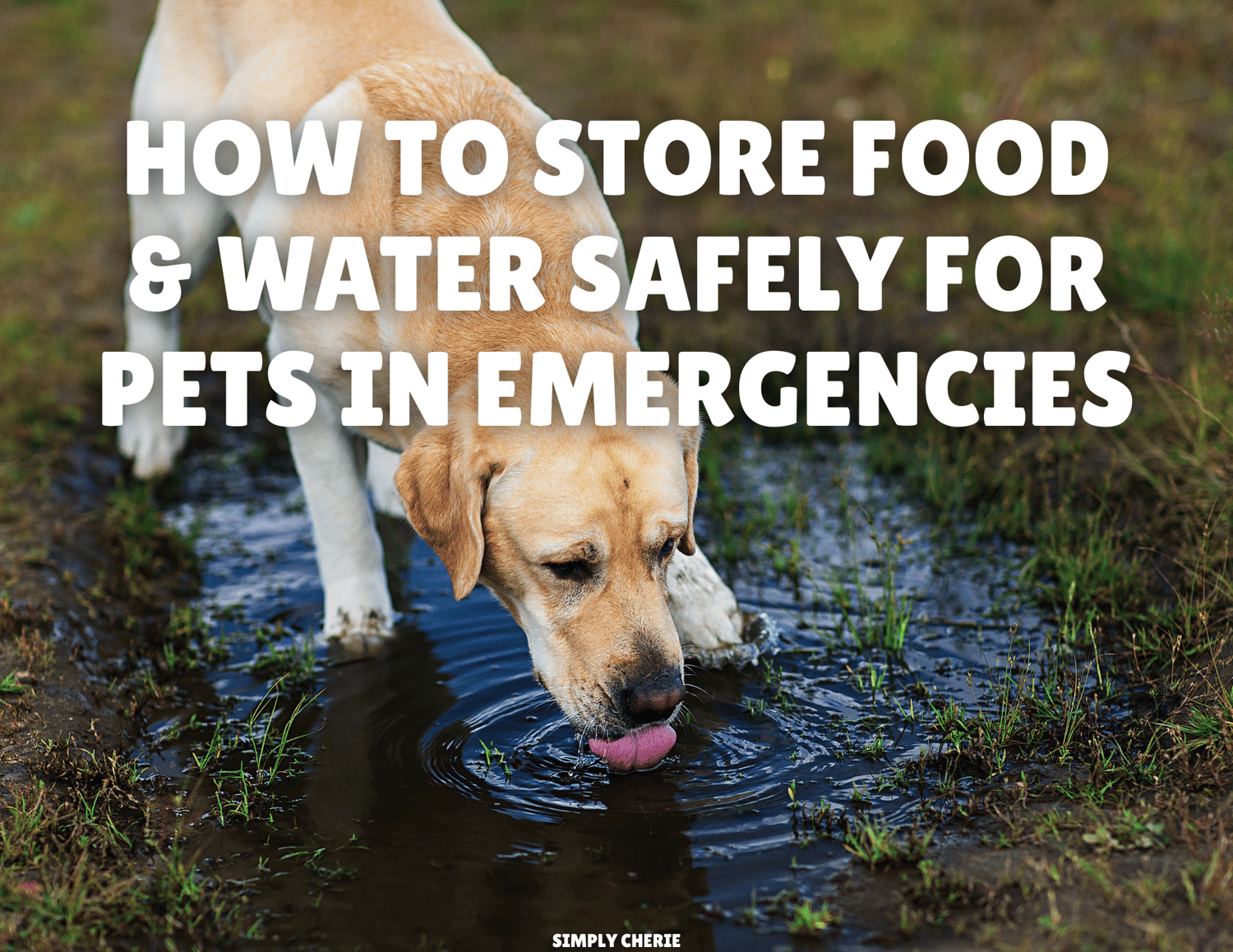

Comments ()